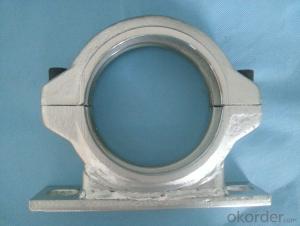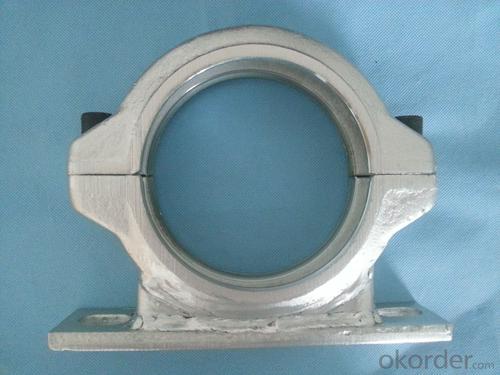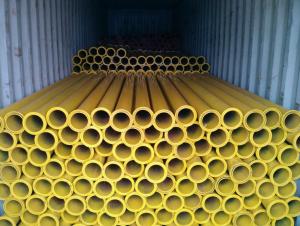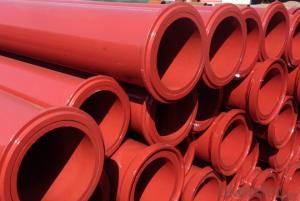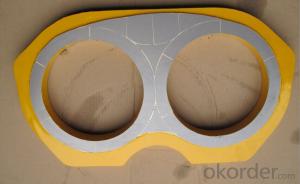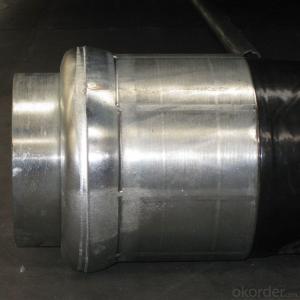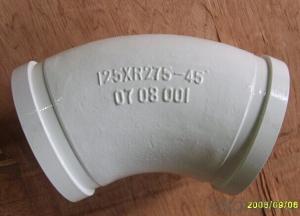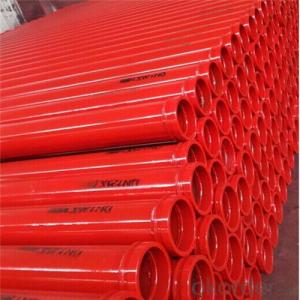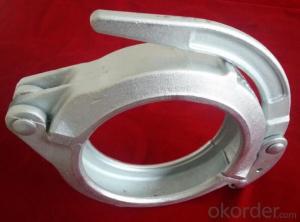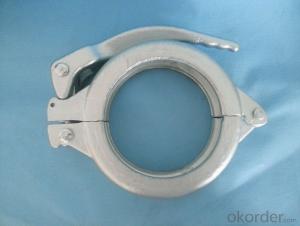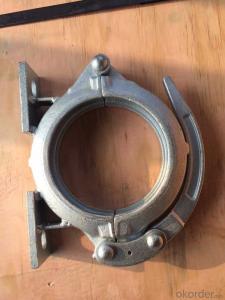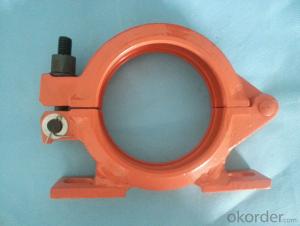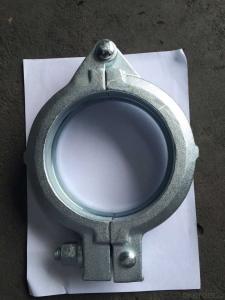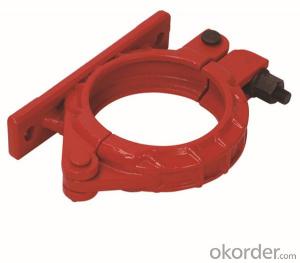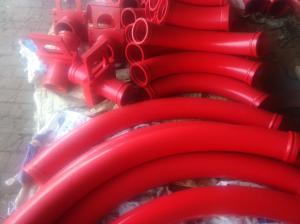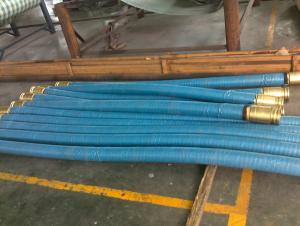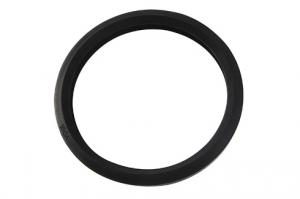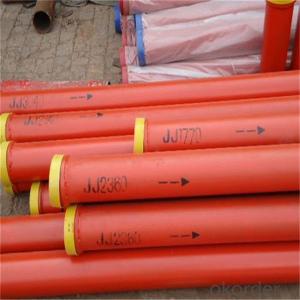Concrete Pump Base Clamp DN125 Forge
- Loading Port:
- China main port
- Payment Terms:
- TT OR LC
- Min Order Qty:
- 20 PCS
- Supply Capability:
- 10000 PCS/month
OKorder Service Pledge
OKorder Financial Service
You Might Also Like
Product Description:
A coupling is a device used to connect two delivery pieps together at their ends for the purpose of transmitting, and prevent the concrete from leaking. Couplings do not normally allow disconnection of shafts during operation.
Main Product Features:
1. use high quality steel. After high-temperature 1200 forging,it’s shaped.
2.High temperature forging.
3.convenient to use, easy operation,and high safety.
4.good sealing,wear-resising,longer service life.
5.do not restrict the steering tubes, pipes during the working process can be 360 degrees rotation.
6.used in concrete pump truck,concrete pump and pipeline connection seal in construction
work equipment.
Product Specifications:
1.Forged
2.2--8 inch
3.Galvanizing/Baking varnish
4.More durable,light,beautiful
Production steps

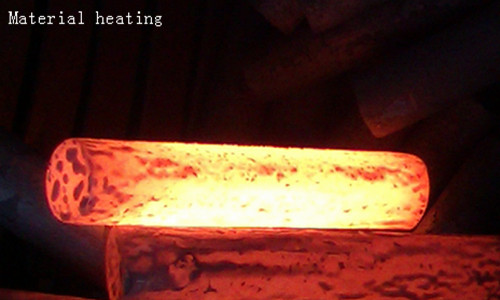
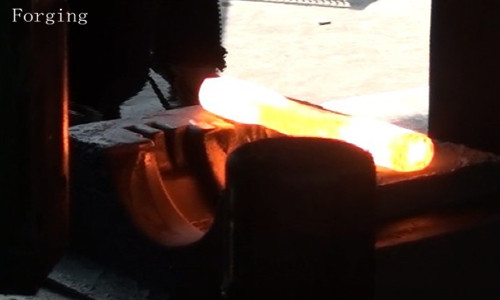
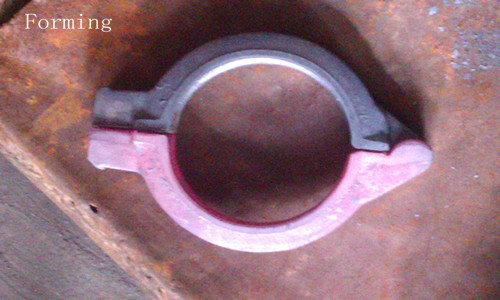
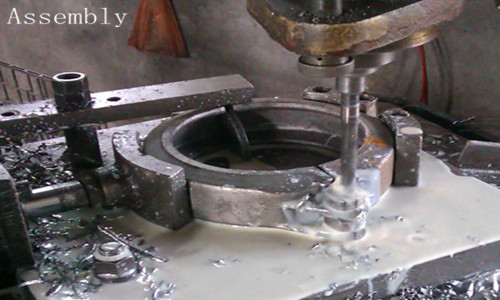
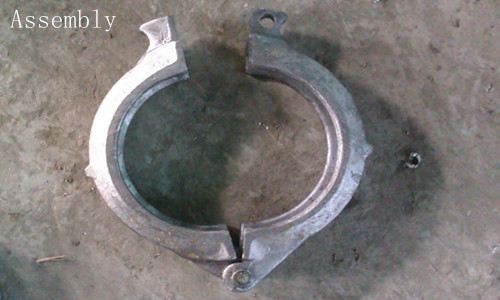
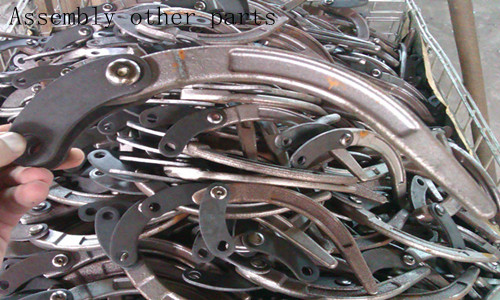
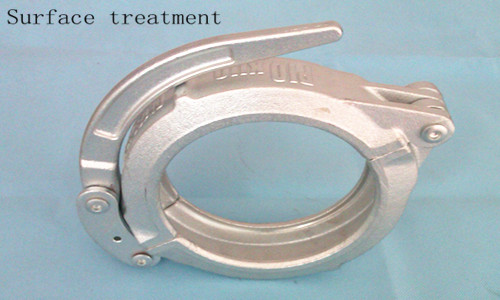
Concrete pump clamp Catalogue
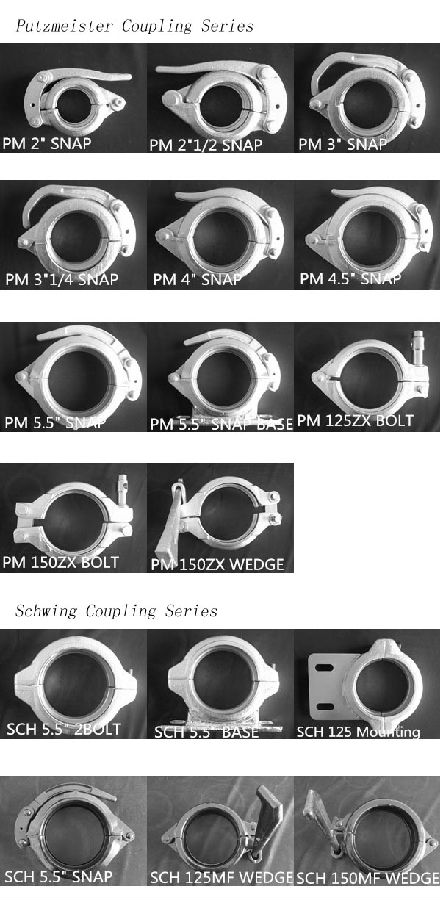
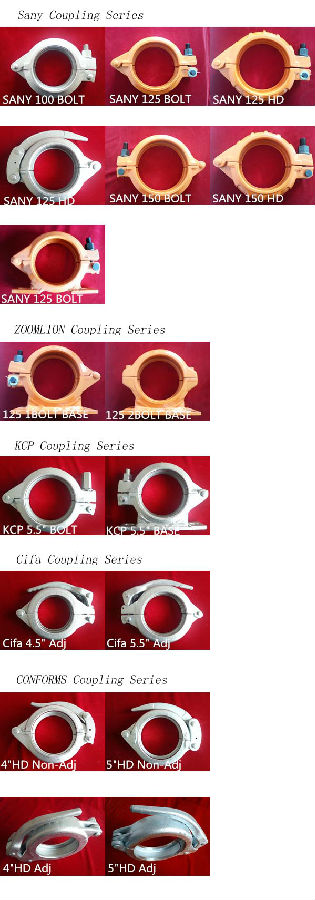
FAQ
1.How do you regarding your product quality?
As our principle is more safety to save more. In China, there are lots of manufactures of this line, but we are the first one that use the forging technic in producing, firmly meet the PM standard.
2.Can I get some samples?
Of course you can. Small sample for free, but you pay the express. For some products are not small, like concrete pump pipe, it’s very difficult to deliver one pipe of 3000mm. If it’s possible, we’d like that you can come here to visit our factory. Welcome!
3. I want to make our logo on the products, is that ok?
Yes, it’s totally ok. OME is available from us.What you should do is send your logo, brand name, or picture to us. And let other things leave on us.
- Q: Can concrete pump spare parts be pre-assembled or pre-tested before installation?
- Yes, concrete pump spare parts can be pre-assembled and pre-tested before installation. This practice ensures that the spare parts are functioning properly and ready for immediate use, saving time and effort during the installation process. Pre-assembly and pre-testing also help identify any potential issues or defects, allowing for necessary adjustments or replacements before installation, ensuring the smooth operation of the concrete pump.
- Q: How do I determine the correct temperature ratings for concrete pump spare parts?
- Determining the appropriate temperature ratings for spare parts of your concrete pump requires careful consideration of the specific requirements and specifications of your pump system. To assist you in this process, the following steps can be taken: 1. Review the manufacturer's documentation: Begin by examining the technical specifications provided by the manufacturer of your concrete pump system. The manufacturer should furnish temperature ratings for various components and spare parts. Look for information regarding temperature limits, recommended operating temperature ranges, as well as any specific guidelines or restrictions pertaining to temperature. 2. Identify crucial components: Identify the key components of your concrete pump system that may be impacted by temperature, such as hoses, seals, gaskets, valves, and electrical components. These components may possess different temperature ratings based on the materials used and their specific design. 3. Evaluate application conditions: Assess the operating conditions of your concrete pump system to determine the potential temperature extremes it may encounter. Factors such as ambient temperature, concrete mix temperature, and the presence of external heat sources (e.g., hot weather or neighboring equipment) can influence the temperature of the system and its spare parts. 4. Verify compatibility: Ensure that the spare parts you are considering are compatible with the specific temperature range of your concrete pump system. Some components may possess different ratings based on factors like chemical compatibility, thermal expansion, and resistance to heat transfer. 5. Seek professional advice: If you are uncertain about the temperature ratings or require further clarification, it is advisable to consult professionals or experts in the field of concrete pump systems. They can offer specific recommendations based on their knowledge and experience. By following these steps and considering the manufacturer's guidelines and expert advice, you can determine the appropriate temperature ratings for spare parts of your concrete pump, thus guaranteeing the safe and efficient operation of your system.
- Q: What are the layout requirements of concrete pump for building engineering?
- The setting of concrete pump should be steady and firm, with heavy vehicle running condition
- Q: Can concrete pump spare parts be painted or coated for increased durability?
- Concrete pump spare parts can achieve greater durability by undergoing painting or coating. This protective measure shields them from corrosion, wear, and other types of harm. Applying a layer of paint or coating enhances their resistance against harsh environmental conditions, chemicals, and moisture. Furthermore, certain paints or coatings can provide extra advantages like heat resistance or non-stick properties, further bolstering the spare parts' durability and performance. It is crucial to utilize appropriate paints or coatings that are specifically formulated for the materials and conditions the spare parts will encounter, guaranteeing optimal adhesion and longevity.
- Q: What is the role of a concrete pump spectacle plate?
- The main purpose of a concrete pump spectacle plate is to provide a stable and secure platform for the concrete pump to rest on while it is in operation. It serves as a support base for the pump, ensuring that it remains steady and balanced while it pumps concrete. The spectacle plate is typically constructed using durable materials like steel or alloy, which can withstand the weight and pressure exerted by the pump. Its design incorporates various features, such as slots or holes, which allow for the attachment of accessories like clamps or pipes. This facilitates a smooth and efficient transfer of concrete from the pump to the desired location. Additionally, the spectacle plate may also have adjustable elements that enable positioning and alignment adjustments, ensuring precise placement of the concrete. In summary, the spectacle plate is essential for maintaining the stability and functionality of the concrete pump, thereby contributing to the successful completion of construction projects.
- Q: How do concrete pump spare parts help in the pumping process?
- The smooth and efficient operation of a concrete pump relies heavily on spare parts. These parts are crucial for enhancing performance, extending the pump's lifespan, and ultimately saving costs. The use of concrete pump spare parts offers several advantages, one of which is improved pumping efficiency. These parts are meticulously manufactured to ensure the optimal flow of concrete through the pump. For example, the wear plate, wear ring, and S valve all play a crucial role in reducing friction and enhancing pumping performance. By minimizing friction and maintaining a consistent flow, these spare parts prevent blockages and allow for the smooth and efficient pumping of concrete. In addition, concrete pump spare parts are vital for minimizing downtime and reducing maintenance costs. Since the pump operates continuously, wear and tear are inevitable. However, replacing worn-out parts with high-quality spare parts on a regular basis can significantly prolong the pump's lifespan and decrease the need for frequent repairs. Investing in durable and reliable spare parts helps operators avoid unexpected breakdowns and costly repairs, ensuring uninterrupted and efficient pumping operations. Furthermore, concrete pump spare parts contribute to the safety of the pumping process. Components such as the safety valve, hopper grate, and control system all play critical roles in preventing accidents and ensuring the well-being of operators. These spare parts are designed to facilitate the safe and controlled pumping of concrete, reducing the risk of equipment failure and potential hazards. In conclusion, concrete pump spare parts are indispensable in the pumping process as they improve efficiency, minimize downtime and maintenance costs, and enhance safety. By investing in high-quality spare parts, operators can optimize the pump's performance, increase productivity, and achieve long-term cost savings.
- Q: Are there any specific guidelines for the installation of control panels or electronic components in concrete pump spare parts?
- Yes, there are specific guidelines for the installation of control panels or electronic components in concrete pump spare parts. When installing control panels or electronic components in concrete pump spare parts, it is important to consider the following guidelines: 1. Protection from Moisture: Concrete pump spare parts are exposed to moisture, which can be detrimental to electronic components. It is advisable to install control panels or electronic components in waterproof or moisture-resistant enclosures to prevent damage from water or humidity. 2. Vibration and Shock Absorption: Concrete pump spare parts are subject to vibration and shock during operation. To prevent damage to control panels or electronic components, it is recommended to use shock-absorbing mounts or vibration-resistant enclosures to minimize the impact of these forces. 3. Temperature Control: Concrete pump spare parts can be exposed to extreme temperatures, both hot and cold. It is crucial to ensure that control panels or electronic components are installed in a temperature-controlled environment. This may involve using insulation or cooling systems to maintain a suitable operating temperature range. 4. Wiring and Connections: Proper wiring and connections are essential for the functioning of control panels or electronic components. It is important to follow the manufacturer's instructions and guidelines for wiring, ensuring that connections are made securely and that proper insulation and protection are provided to prevent short circuits or electrical hazards. 5. Accessibility and Maintenance: Control panels or electronic components should be installed in a manner that allows easy accessibility for maintenance and repairs. It is recommended to leave enough space around the components for easy inspection, servicing, and replacement if necessary. By adhering to these guidelines, the installation of control panels or electronic components in concrete pump spare parts can be done in a manner that ensures their long-term functionality and durability.
- Q: Can I get spare parts for concrete pump hydraulic systems?
- It is indeed feasible to acquire spare parts for hydraulic systems of concrete pumps. Numerous manufacturers and suppliers present an extensive selection of spare parts exclusively crafted for concrete pump hydraulic systems. These spare parts encompass hydraulic cylinders, valves, hoses, filters, seals, and other indispensable components. To guarantee compatibility while procuring spare parts, it is crucial to ascertain the precise make and model of the concrete pump hydraulic system. Moreover, it is advisable to obtain spare parts from trustworthy suppliers or manufacturers to assure excellent quality and dependability.
- Q: How often should hopper grate handles be inspected or replaced in a concrete pump?
- Regular inspections should be conducted on hopper grate handles in a concrete pump to identify any signs of wear and tear or damage. The frequency of these inspections and the need for replacement may vary depending on the equipment's usage and condition. It is suggested that the hopper grate handles be inspected at least once a month or after every 500 hours of operation, whichever occurs first. During the inspection, it is important to verify that the handles are firmly attached to the hopper grate and to examine them for any cracks, bends, or other structural problems. If any damage is detected, it is recommended to promptly replace the handles to prevent accidents or further harm to the equipment. It is also crucial to adhere to the manufacturer's guidelines and recommendations for the maintenance and replacement of hopper grate handles. By regularly inspecting and replacing the handles as necessary, the safe and efficient operation of the concrete pump can be ensured.
- Q: How can one ensure proper alignment and positioning of concrete pump spare parts during installation?
- Achieving the desired alignment and positioning of concrete pump spare parts during installation is crucial for the pump's efficient and safe operation. Here are some important steps to follow: 1. Familiarize yourself with the manufacturer's instructions: Before starting the installation process, carefully read and understand the instructions and guidelines provided by the manufacturer. These instructions will give you specific information on how to align and position the spare parts for your concrete pump model. 2. Prepare the work area properly: Clear any debris, dust, or obstacles from the work area that could hinder the installation process. A clean and organized work environment will make it easier to accurately position and align the spare parts. 3. Use appropriate lifting equipment: Concrete pump spare parts can be heavy and require special lifting equipment to prevent damage or injuries. Utilize cranes, hoists, or forklifts to lift and position the spare parts accurately and safely. 4. Employ precise measuring tools: Invest in high-quality measuring tools like laser levels, alignment guides, and precision measuring tapes. These tools will help you ensure precise alignment and positioning of the spare parts during installation. 5. Verify dimensions and specifications: Before installing any spare part, compare the dimensions and specifications provided by the manufacturer with the actual part. This will help you identify any discrepancies or potential issues that need to be addressed before installation. 6. Follow a systematic installation process: Begin with the main components of the concrete pump and gradually proceed to the spare parts. Follow a step-by-step approach, meticulously aligning and positioning each spare part according to the manufacturer's instructions. 7. Seek professional assistance if necessary: If you are uncertain about the proper alignment and positioning of certain spare parts, don't hesitate to seek professional assistance. Consulting experienced technicians or contacting the manufacturer's customer support can provide valuable guidance and ensure correct installation. 8. Perform a final inspection: Once all the spare parts are installed, conduct a thorough inspection to verify the alignment and positioning. Check for any visible gaps, misalignments, or irregularities. Immediately address any issues to ensure the proper function and longevity of the concrete pump. By following these steps and paying attention to detail, you can guarantee the proper alignment and positioning of concrete pump spare parts during installation, resulting in a dependable and efficient pump system.
Send your message to us
Concrete Pump Base Clamp DN125 Forge
- Loading Port:
- China main port
- Payment Terms:
- TT OR LC
- Min Order Qty:
- 20 PCS
- Supply Capability:
- 10000 PCS/month
OKorder Service Pledge
OKorder Financial Service
Similar products
Hot products
Hot Searches
Related keywords
